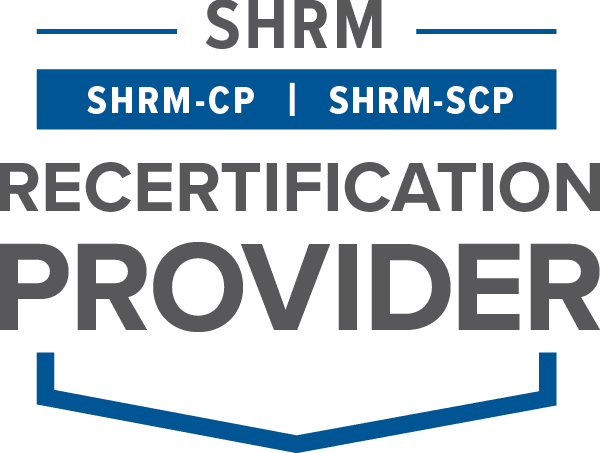
Dealing Effectively With Unacceptable Employee Behavior
Get expert advice on the sticky issue of disciplining workers whose performance just doesn’t measure up. In this live, virtual course, you'll learn how to handle each step of the process — from identifying performance problems...to separating issues from personalities...to assessing the severity…to intervention strategies…to termination procedures.
Course Outcomes
- Identify 15 key warning signs of emerging performance problems
- Differentiate and manage a variety of difficult personality types
- Respond proactively to negative situations, rather than acting on impulse
- Deliver effective feedback that promotes improvement and maintains professionalism
- Select the appropriate intervention strategy to resolve performance issues
- Document terminations thoroughly and defend them with solid evidence
4.7out of 5
1,000
people have taken this course
99%
found this course to be helpful in their workplace
Course Agenda





The use of this seal confirms that this activity has met HR Certification Institute’s® (HRCI®) criteria for recertification credit pre-approval.

SkillPath is recognized by SHRM to offer Professional Development Credits (PDCs) for the SHRM-CPSM or SHRM-SCPSM. For more information about certification or recertification, please visit www.shrmcertification.org.
Event Dates & Locations
| Date | Time | Price | Action | ||
|---|---|---|---|---|---|
Live Virtual Workshop
$
Save when you enroll multiple attendees!
Just $189 per person when you enroll 4+ learners
Included in
SkillPath Unlimited+Live
$499 per year
- Access this course and 6000+ other live virtual workshop sessions(includes live virtual events priced $399 or less)
- 500+ webinars broadcast daily
- 2,000+ on-demand resources
- And so much more!
More Courses in
 | skillpath.com/XHDW |
Dealing Effectively With Unacceptable Employee Behavior
Get expert advice on the sticky issue of disciplining workers whose performance just doesn’t measure up. In this live, virtual course, you'll learn how to handle each step of the process — from identifying performance problems...to separating issues from personalities...to assessing the severity…to intervention strategies…to termination procedures.
Session 1: Identifying Performance Problems and Maintaining Open Communication Channels
- Realize the major reasons employees don’t perform up to standards
- Be aware of warning signs that a performance problem is brewing
- Determine when a “problem” employee really isn’t a problem
- Overcome reasons that bosses sometimes fail to recognize — or worse, fail to address — performance problems
- Understand the critical differences among coaching, criticizing and disciplining—and decide which approach a particular situation calls for
- Constructive feedback: Use it effectively to convey the perceived problem to the employee and promote productivity
- Avoid emotionally charged statements and communication breakdowns that can escalate a problem situation
- Don’t soft-pedal the issue: The importance of using specific, clear and direct language when communicating with employees about performance problems
Session 2: Positive Intervention Techniques for Turning Performance Problems Around
- Understand that you, as a manager or supervisor, may inadvertently contribute to performance problems
- Step-by-step checklists for preparing and conducting effective intervention meetings
- Be prepared with effective response strategies if employees react strongly during your discussions
- Avoid the common mistakes managers and supervisors make when preparing for counseling sessions or performance reviews
- Know the importance of taking corrective rather than punitive action
- What are the major elements every successful performance improvement plan must include?
- Try innovative techniques that often work when traditional approaches to discipline don’t get results
- Realize when verbal reprimands are effective — and best practices to follow
Session 3: When the Problem Persists: Conducting a Formal Discipline Session or Deciding to Terminate
- Follow a step-by-step guide for conducting an effective — and legally sound — discipline session
- Consider this 6-point checklist when determining if termination is the best course of action
- Never ignore employee actions and behavior that affect performance — and when they warrant termination
- List examples of gross misconduct that are grounds for immediate dismissal — and how to keep control of difficult termination situations
- Protect yourself and build your case with solid documentation
- Know the 3 actions you must take before firing
- Follow step-by-step guidelines for conducting a termination meeting
- Calm the waters: What to do after a termination to minimize negative repercussions among remaining workers
PLUS: Protecting You and Your Organization Legally
- Avoid these 5 potentially explosive scenarios at all costs.
- Develop a progressive discipline policy that gets results and minimizes the legal liabilities of your organization.
- Take these 6 actions during disciplinary interviews to reduce the risk of lawsuits.
